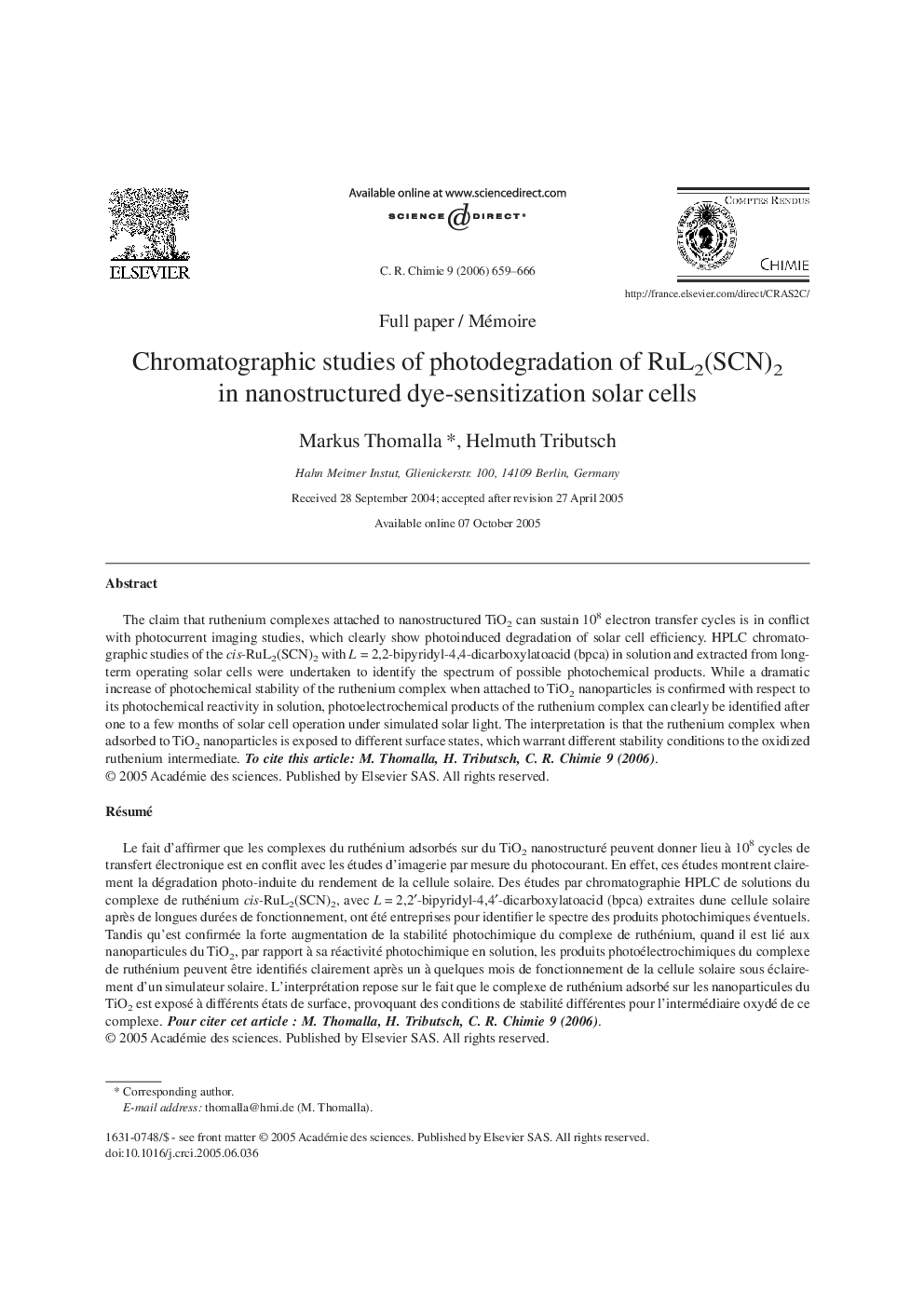| کد مقاله | کد نشریه | سال انتشار | مقاله انگلیسی | نسخه تمام متن |
|---|---|---|---|---|
| 171567 | 458466 | 2006 | 8 صفحه PDF | دانلود رایگان |

The claim that ruthenium complexes attached to nanostructured TiO2 can sustain 108 electron transfer cycles is in conflict with photocurrent imaging studies, which clearly show photoinduced degradation of solar cell efficiency. HPLC chromatographic studies of the cis-RuL2(SCN)2 with L = 2,2-bipyridyl-4,4-dicarboxylatoacid (bpca) in solution and extracted from long-term operating solar cells were undertaken to identify the spectrum of possible photochemical products. While a dramatic increase of photochemical stability of the ruthenium complex when attached to TiO2 nanoparticles is confirmed with respect to its photochemical reactivity in solution, photoelectrochemical products of the ruthenium complex can clearly be identified after one to a few months of solar cell operation under simulated solar light. The interpretation is that the ruthenium complex when adsorbed to TiO2 nanoparticles is exposed to different surface states, which warrant different stability conditions to the oxidized ruthenium intermediate. To cite this article: M. Thomalla, H. Tributsch, C. R. Chimie 9 (2006).
RésuméLe fait d'affirmer que les complexes du ruthénium adsorbés sur du TiO2 nanostructuré peuvent donner lieu à 108 cycles de transfert électronique est en conflit avec les études d'imagerie par mesure du photocourant. En effet, ces études montrent clairement la dégradation photo-induite du rendement de la cellule solaire. Des études par chromatographie HPLC de solutions du complexe de ruthénium cis-RuL2(SCN)2, avec L = 2,2′-bipyridyl-4,4′-dicarboxylatoacid (bpca) extraites dune cellule solaire après de longues durées de fonctionnement, ont été entreprises pour identifier le spectre des produits photochimiques éventuels. Tandis qu'est confirmée la forte augmentation de la stabilité photochimique du complexe de ruthénium, quand il est lié aux nanoparticules du TiO2, par rapport à sa réactivité photochimique en solution, les produits photoélectrochimiques du complexe de ruthénium peuvent être identifiés clairement après un à quelques mois de fonctionnement de la cellule solaire sous éclairement d'un simulateur solaire. L'interprétation repose sur le fait que le complexe de ruthénium adsorbé sur les nanoparticules du TiO2 est exposé à différents états de surface, provoquant des conditions de stabilité différentes pour l'intermédiaire oxydé de ce complexe. Pour citer cet article : M. Thomalla, H. Tributsch, C. R. Chimie 9 (2006).
Journal: Comptes Rendus Chimie - Volume 9, Issues 5–6, May–June 2006, Pages 659–666